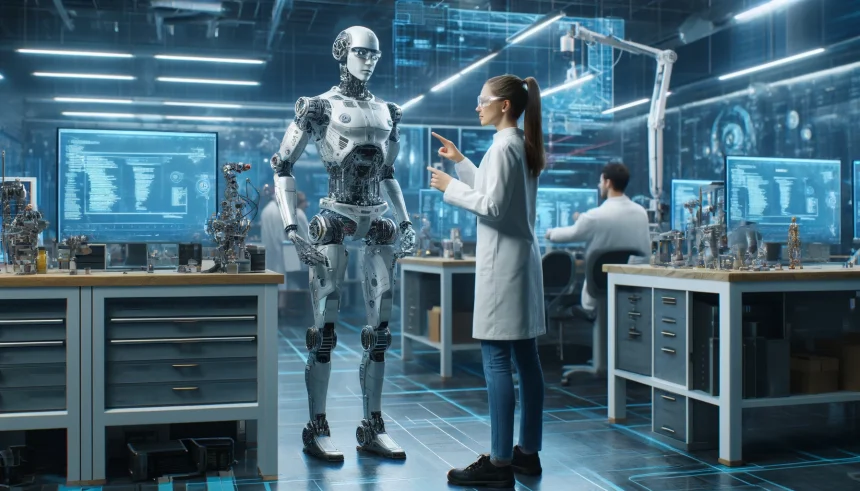Soft materials have become increasingly significant in small-scale robotics due to their ability to replicate the nuanced movements and adaptive behaviors observed in natural organisms. The recent article published in Advanced Materials, titled “A Naturally Inspired Extrusion‐Based Microfluidic Approach for Manufacturing Tailorable Magnetic Soft Continuum Microrobotic Devices,” delves into this innovative field. By leveraging microfluidics to control reaction-diffusion processes, researchers have devised a method to produce multifunctional and compartmentalized alginate-based microfibers, which can act as magnetic soft continuum robots. This approach allows precise customization of the fibers, including their stiffness and magnetic responsiveness, thus opening new avenues for small-scale robotic applications.
Microfluidics has been employed to achieve precise control over reaction-diffusion processes, leading to the creation of sophisticated, multifunctional, and compartmentalized alginate-based microfibers. These fibers, which can be tailored in terms of geometry, degree of cross-linking, and spatial localization of magnetic nanoparticles, are integral to magnetic soft continuum robotics. By fine-tuning these parameters, the stiffness and magnetic responsiveness of the microfibers can be adjusted, making them highly versatile for various applications.
Microfluidic Customization
The unique capabilities of microfluidic technology enable the manipulation of reaction-diffusion conditions to produce advanced alginate-based fibers. These fibers can be designed in compact or hollow geometries, with the degree of cross-linking and the precise localization of magnetic nanoparticles being customizable. This level of control allows for the creation of fibers with specific mechanical and magnetic properties, tailored to the needs of small-scale robotic devices.
One significant aspect of this technology is the inclusion of chemically cleavable regions within the fibers. These regions enable the fibers to be disassembled into smaller robotic units or transformed into roll-up structures when subjected to a rotating magnetic field. This feature enhances the adaptability and functionality of the microfibers, making them suitable for a variety of applications.
Looking at previous information, earlier technological developments in the field of microfluidics and soft robotics primarily focused on creating simple, relatively uniform fiber structures with limited functionality. With this new approach, the sophistication and customizability of the fibers have been significantly enhanced, allowing for more complex and dynamic robotic behaviors. This evolution marks a substantial leap from the earlier stages of development.
Moreover, the innovative use of reaction-diffusion processes under microfluidic control sets this study apart from past efforts. Traditional fabrication methods often encountered challenges in achieving the fine control necessary for small-scale soft devices. This new method overcomes such limitations, providing a robust framework for the production of highly integrated soft robotic systems with tailored properties.
The implications of this research are far-reaching. By enabling the production of customizable, multifunctional microfibers, this microfluidic approach can potentially revolutionize applications in medical devices, environmental monitoring, and beyond. The versatility of the fibers, combined with their ability to be disassembled or reconfigured, presents numerous possibilities for future advancements in soft robotics.
Understanding the full potential of these microfibers requires a deeper exploration of their applications. For instance, in medical robotics, such fibers could be used to navigate complex biological environments or deliver targeted therapies with high precision. In environmental monitoring, they could offer new methods for detecting and responding to pollutants or other hazards. The ability to tailor their properties adds a layer of functionality that could make them indispensable in many fields.
- Microfluidics controls reaction-diffusion for multifunctional alginate-based microfibers.
- Fibers’ stiffness and magnetic responsiveness are highly customizable.
- Disassemblable fibers enhance versatility for various small-scale robotic uses.










